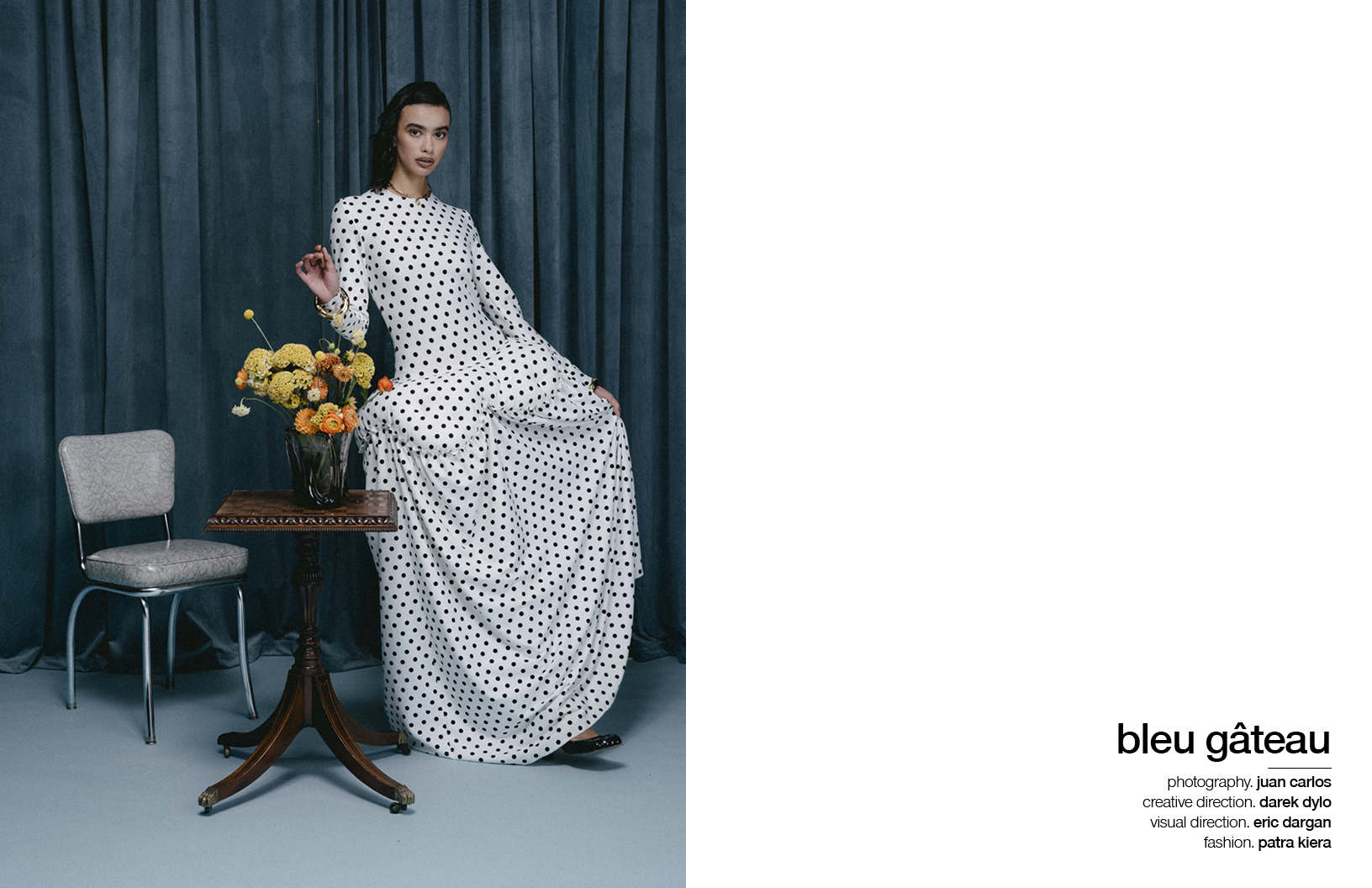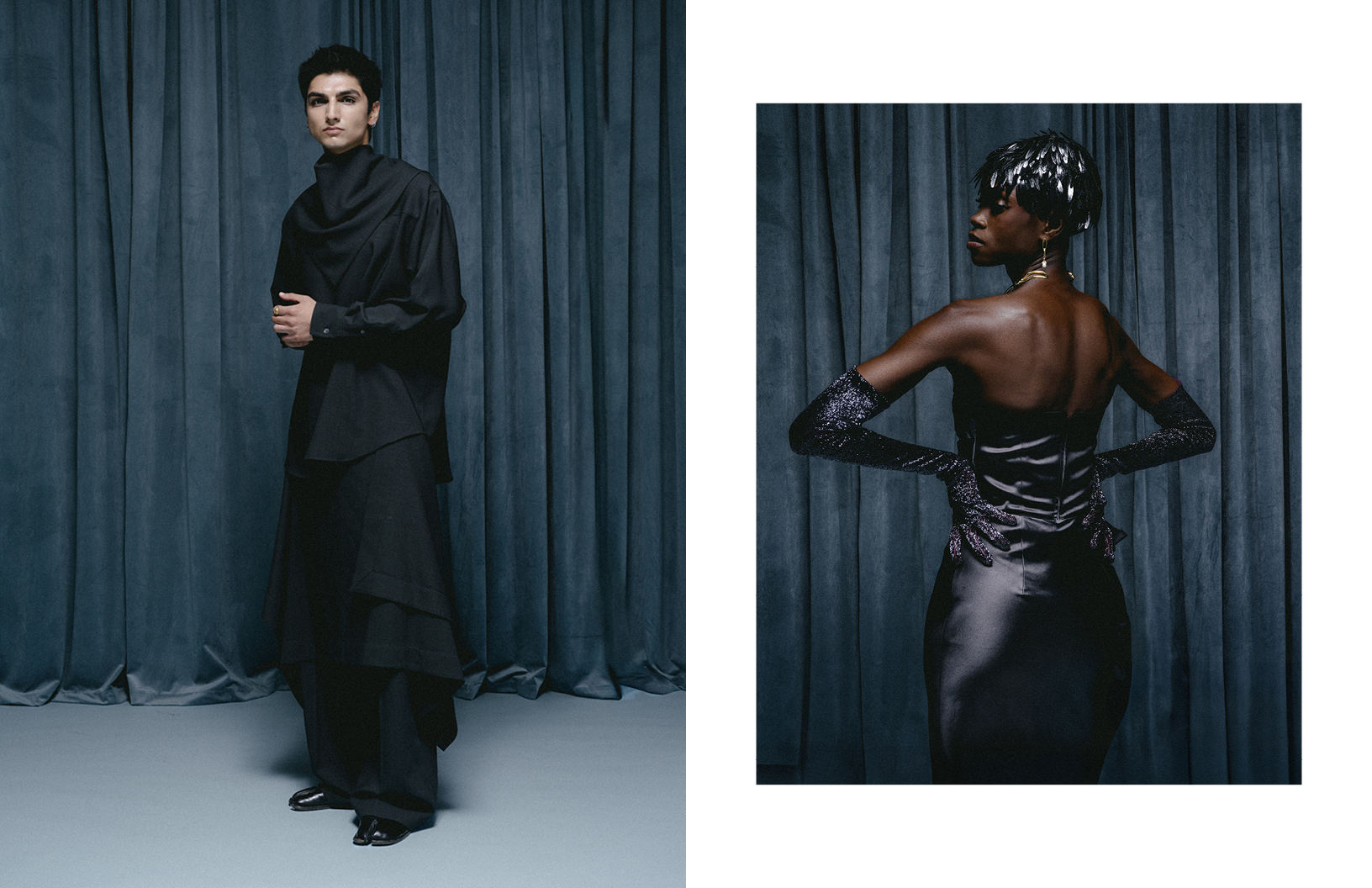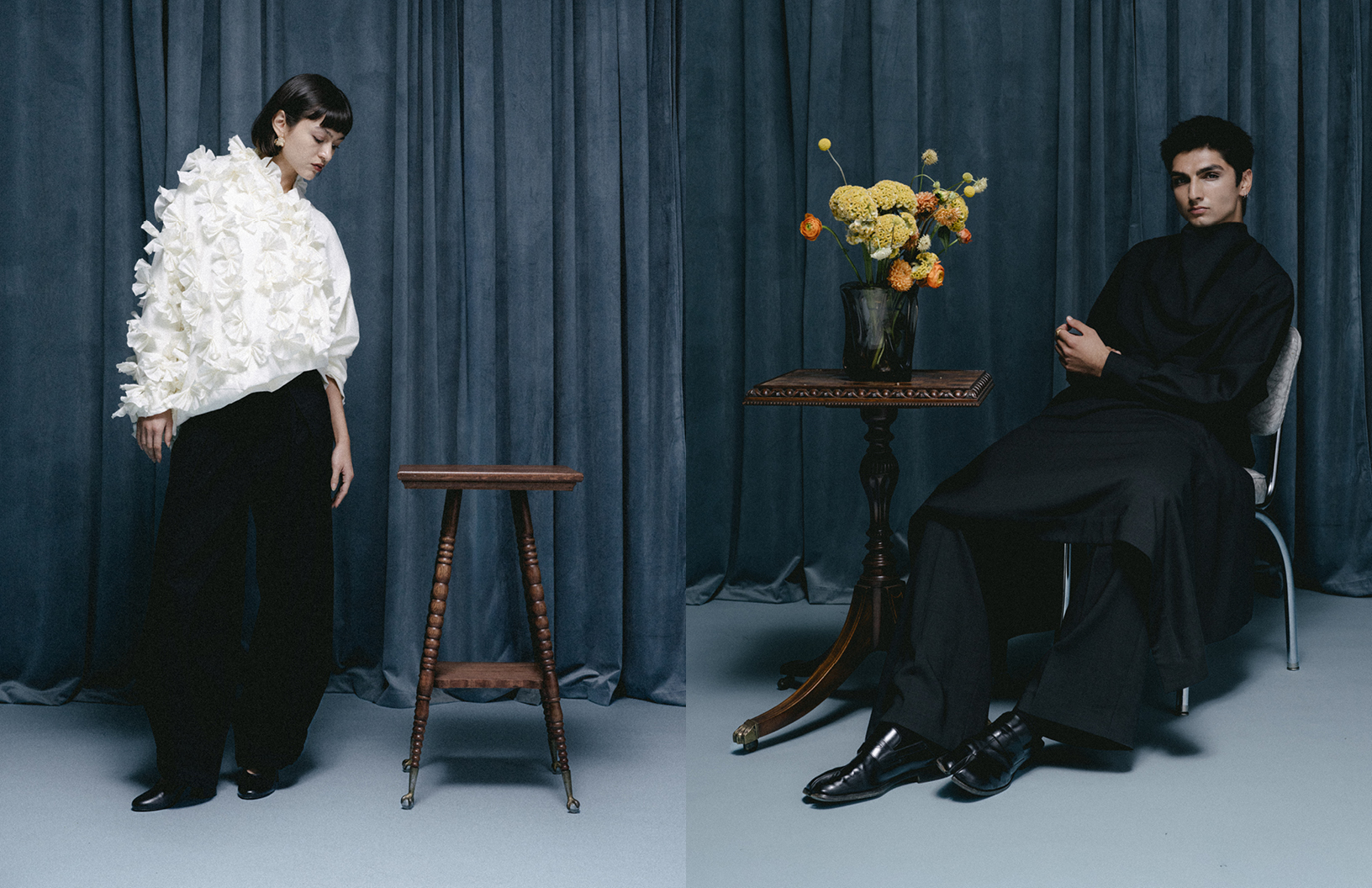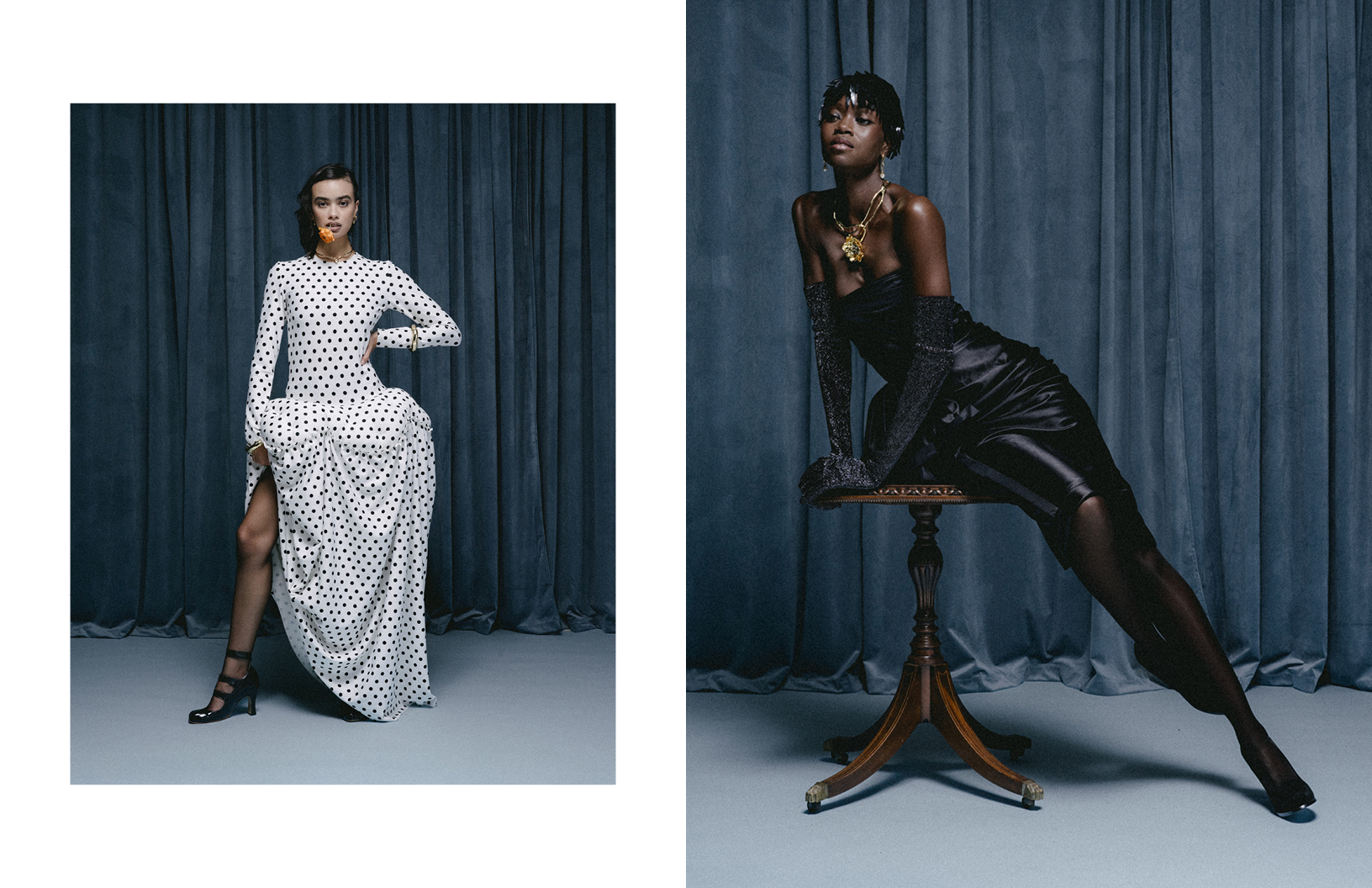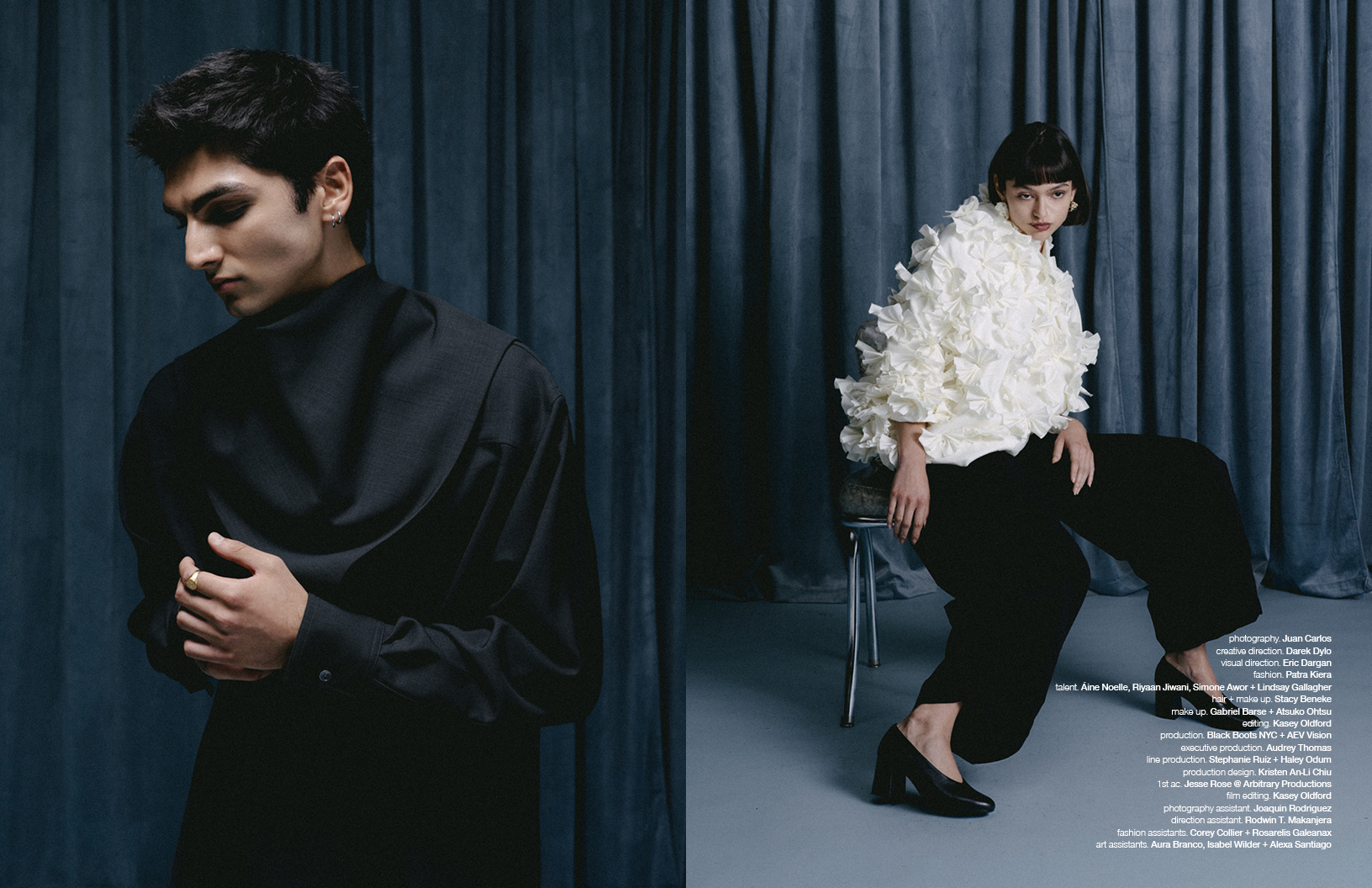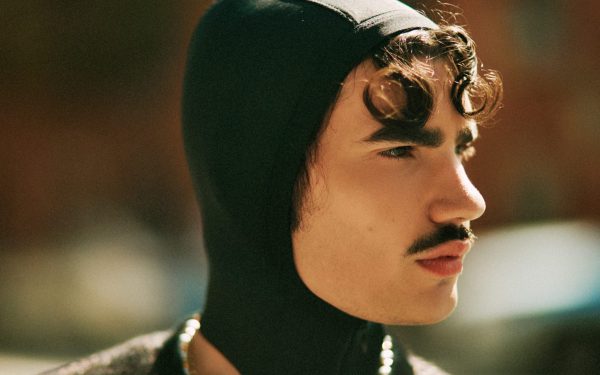Polish designer Joanna Organisciak finds her inspiration in negative space. “Drown,” the latest series from Joanna, takes this vision and expands upon it, creating a series of photographs starring model Anna Drobna as she explores a space with her prosthetic arm. The photos, taken by photographer Michał Massa, are a stunning presentation of Joanna’s creations. Schön! spoke with the designer about this series and her history as a designer.
What first inspired your interest in design?
I don’t clearly remember a certain point where my interest in design began, but now that I think about it, I admit with a smile that the first inspiration was not design, but the style of my grandmother: black, simple, with red lips. After years in the corporate world with a pretty scheduled work life, I felt that something was missing, but I didn’t exactly know what it was. Everything changed when my daughter was born. My life slowed down. I remember the moment of watching my little girl discover the power of imagination, seeing so many things in very simple objects. I thought, “This is it. I want the same.”
That was a trigger to try something completely new. I started my studies at Cracow School of Art and Fashion Design, not predicting that it would spark a revolution in my life. The school awakened my artistic spirit. I felt the need for transformation, and I discovered in the recesses of my own consciousness this thing I was missing.
You began as a pharmacy student. How did you make the switch to design?
It was a long, arduous, difficult process. I started as a very rational person, not listening to myself and instead mostly concentrating on what I should do rather than what I liked or felt. In my trade, only knowledge mattered, so I didn’t pay much attention to my constant need for creation. I just understood that this need would be filled with science. I completed medical school, slowly and very deeply realising that it was not the place for me to be creative. But in life, lessons come when we are ready. I had to finish pharmaceutical studies and spend seven years in the industry to be ready to find a true purpose and vocation.
Does your pharmacy background, or perhaps the switch from it, influence your work today?
Pharmacy has one substantial thing in common with design – imagination. We don’t see the structure of molecules, their receptor binding and activity. We have to imagine that. In design, I first see things in my imagination, then I create.
My scientific background gives me analytical skills, a better insight into the essence of fashion and — let’s call it “the patience of a long-distance runner”. This makes it easier for me to change attitudes from “rational” to “artistic” or switch from a broad perspective to a more detailed one.
I’m devoted to my work, paying attention to quality, workmanship and functionality, as well as to the aesthetics of each project. When I start a project and I feel it, it becomes my life. My brain is working on the idea, making its own research, connections, putting forward a thesis, demanding proofs, etc. This “thinking” stage of the process is pretty long and at the end brings about a simple, synthetic form.

How did you meet your collaborators on this shoot, Michał and Anna? What about their work made you know they would be ideal for this shoot?
I met Anna during Cracow Fashion Week – she was a model in a charity fashion show. From the beginning, I was delighted with her openness. She told me about her lack of forearm, which I didn’t notice at all, adding that at the show she can go without a prosthesis. I was astonished and right away I shared with her my vision of her as a sculpture — timeless beauty. I already knew [Michał] Massa’s photos – the mixture of roughness and sensuality. I also read his articles, lent him my designs for his photography, but we hadn’t worked together before.
During fittings with Anna and testing new ideas, she shared with me that she was born without a left forearm. I heard her thinking aloud: “Do I really need to have two hands? I will never know what it is like to have two real hands.” That was the clue. So I later asked myself, “why does she have to wear a prosthesis? To make her disability less visible?“ Not knowing life with two hands, she still feels forced to adjust. I also discovered that Anna has been snowboarding for ten years, and since last year she has been on the national para-snowboarding team!
Could you describe the collaborative process between you and photographer Michał?
It was spontaneous. We exchanged ideas, thoughts, sets of possible poses. We right away agreed upon a place for the photoshoot — an abandoned room of an aluminium smelter. During the photo session itself, it was total freedom and spontaneous. I decided to work with Massa because of his unconventional photography, full of emotions and expression while at the same time synthetic. His personality was another aspect — open-minded and accurate with no pressure of time. We were ready when we were really ready. Since I finished Design School, I’ve dreamt of having “my photographer” — a kind of a speechless connection and understanding, no barriers, just following instinct.
As for the clothing, what were some of your inspirations for these works?
My main inspirations were the works of Dionisis Fotopoulos. I have never seen that kind of freedom in approach to the human body and the expression built by very simple props. He was a genius. It changed my perspective from “expression by dressing the body” to “expression by revealing the body”.
The key to this project was the stigma of “lack” — physically, it was Anna’s lack of forearm and her prosthesis named Halina. The time we spent with Anna playing with different materials and expressions was crucial. She was very patient, understanding that I needed time to get in her shoes. I paid attention to the moments of attaching and detaching Halina into Anna’s arm. I also spent some time only with Halina to feel it more deeply. I focused on the border of natural skin and prosthesis. Usually, we cover places that differ, simply to avoid somebody’s eyes catching that place. Here I wanted to demonstrate the “lack” — to emphasise the dividing line.
Did you have any specific goals with this collection? What were they and why?
The idea of focusing on the “lack” came about during talks with Anna. Is the fact that Anna never had a hand really a “lack” to her? Although she does not know life with two hands, she adapts to “reality”, physically and mentally, by wearing prosthesis. I wanted to confront the lack of something with this pressure to adjust.
This idea matches a quote from “Bieguni” by Olga Tokarczuk, Polish Nobel Prize winner in the field of literature for 2018: “…And he feels something that does not exist, is in a physical sense an empty place, there is nothing that could give any sensation. Something that doesn’t exist hurts me. Phantom. Phantom pain.” Thanks to Anna I understood more about acceptance of disability and the restrictions in our heads.
You built many of your early designs around a white shirt. Why did you choose this piece originally, and how does this impact the way you design today?
I started with the white shirt because it is the world’s oldest garment. Today it is synonymous with elegance, class and style, and it also appears in professional life and dress codes. A white shirt is a permanent element of every wardrobe, regardless of gender and style. I wanted to present this symbol in a more avant-garde, modern style. If you wear my shirt you are still within “dress code”, but you are also expressing yourself in an extraordinary way. I usually use black and white materials and focus mostly on finding new forms and shapes. It is easier for me to see the effect when I use a limited palette of colours and basic patterns. The white shirt is perfect for that.
After the deconstruction of the white shirt, I continued designing all types of garments and shoes. My inspirations were movies, music, emotional states, state of matter, people like Elliott Sailors and the problems of today’s world. I see more possibilities in the future, and the white shirt will be a stable element. Individual pieces of my collections are easy to combine and add to to build a highly original wardrobe.
How have you felt your approach to design change over your years of experience?
I’m undoubtedly an “artist in the process”. I started with the concept of a product, designing while paying a lot of attention to photo sessions and, my favourite, fashion shows. In my head, I was linking clothes, shoes, models, light, music, choreography and vision — this mixture of excitement, doubt, passion and fear, a few months of preparation, and finally a three-minute show where you really face the result, the truth. It pushed me into scenography and theatre, where you create the director’s vision, making it both meaningful and unnoticeable at the same time. You materialise the concept, remembering that scenography is the background.
These experiences allowed for a smooth transition from self-education to conducting cyclical classes at the Old Theatre’ for the School of Choreography. Choreographic expression, movement of the body in conjunction with the costume’s expression and the stage conditions are all fascinating relationships. I’ve also started my author’s workshop, “Recycle by Art”, as old clothes are very often my inspiration. Learning about their potential, giving second life to old clothes is, in general, a lesson to appreciate the things we have in every aspect of life. Some things in my approach to design remain the same: the significance of the idea, trust in my intuition, keeping open-minded and my timeless design fully advocating the philosophy of slow and no-waste fashion.
What excites you about the Polish fashion industry right now?
I’m not sure if we can use the term “Polish Fashion Industry” in Poland. Fashion in Poland is still developing. That doesn’t mean that we don’t have great designers, because we do. Since two years ago, we’ve had a Polish edition of Vogue. On the other hand, lots of great designers rely solely on retail sale, because we don’t have wholesale buyers or very few of them. Distribution is difficult.
Considering the big potential of Polish design, there is a big need for a nationwide, institutionalised support system in Poland, ranging from financial to substantive support — and real promotion. The awareness of environmental issues is noticeably increasing. The market for eco-friendly brands is growing. It is essential to pay attention to all aspects of the production.
What can our readers expect from you in the future?
I’m determined to achieve an even higher artistic level and continue building my brand, combining applied art with fine art. Today I see projects in a wider perspective where all elements: idea, objects, costumes, light, music, everything works in harmony. For sure my hunger for development into a multi-function artist with a completed vision will continue. I want to create a coherent whole, discovered by personality. I’m open to new ideas and possibilities, I love various means of expression and an eclectic approach. I see potential in the borderline projects, which merge science and design, knowledge and intuition, facts and art. The artist always talks about herself/himself in different ways. I hope my multi-functionality will help me to develop and surprise you next time.

Discover more about Joanna Organisciak and her brand on Instagram, Facebook, and web.
photography. Michał Massa
designs, fashion + scenography. Joanna Organisciak
model. Anna Drobna

































































